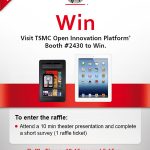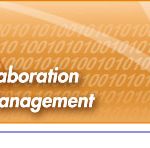As Apple races towards $200B in revenue, sometime in 2013 and perhaps $300B by 2015, Tim Cook knows it is in Apple’s best interests to start building a sizeable percentage of iPhones and iPADs in the US and soon. At the All Things D conference this week, Walt Mossberg asked Cook about Apple’s manufacturing presence in China and “if Apple envisions having big manufacturing in the U.S.?” To which Cook said: “I want there to be.” He then proceeded to communicate that someday assembly could be moved to the US and that “We should do more semiconductor things in the U.S.” I read this as a strategy that leads to a significant differentiator relative to Apple’s competitors (i.e. Samsung, HP and Dell).
For Apple to extend its lead amongst competitors, it must continue to build Brand Equity and Goodwill in all the regions of the World that it sells its products. Soon that will include all six continents. Goodwill can be built by expanding its presence into a number of communities in the form of jobs and charity. Austin is home to some of Apple’s planned expansion and the Samsung fab that builds the processors powering the range of iOS devices. Discussions at the school boards now include buying iPADs for elementary and middle school kids. Dell PCs are not being considered.
Expand that thought to include the Federal Government and every statehouse and your talking about a huge market expansion that awaits Apple in the coming years. One way that Apple can make the transition easier from PCs to Apple iPADs, MAC Airs and iPhones is by letting the buyers know that a majority of the components are made in America as well as final assembly being completed here. Dell and HP will not have the financial flexibility to follow in Apple’s path nor will Microsoft be able to stop the train as it leaves the station.
Apple’s meteoric rise has caught many by surprise but to go this next step, building in America, is reminiscent of Toyota and Honda’s rise in the 1970s and 1980s. The demand for their cars was so great that Detroit was about to go under save for government imposed import restrictions on cars and 25% tariffs on trucks. The Japan automakers got the message and began transplanting assembly plants across a number of states with local suppliers included. The import quotas were made moot.
What does this mean for the semiconductor industry? As Apple has imposed labor work rules in Chinese plants, expect that they will also impose supplier requirements that meet their long-term strategic goals. I believe it when Tim Cook says he wants to source more semiconductor components from the US and that he wants to eventually set up assembly here. The Goodwill he generates will vault Apple past his current competitors and even more important, past Samsung. Look for Apple to fab with Intel in a US plant on preferential terms. I think price is what keeps Apple out of Intel today, but this will change. Look for a closer relationship with Micron for DRAM and NAND Flash. Other suppliers like Qualcomm, Broadcom and Cirrus may have to build at Global Foundries in New York unless TSMC sets up shop in the US. To not build in the US brings many downside scenarios in play with Apple that would more than offset any manufacturing cost increase. Time to be proactive and grab the ring.
Finally, a point that has to be highlighted to understand the ruminations of this blog. It is the background of Tim Cook, son of a shipyard worker from Robertsdale, Alabama and once a worker in a Paper Mill plant and Aluminum factory that has caught my attention. I come from an area of the country that, like Cook’s, was heavy blue collar based. And one summer, I too worked in a Paper Mill (in Pennsylvania). When you grow up in these surroundings, you always feel the tug to do something that is meaningful not just in Silicon Valley but in the rest of America. I believe this is what is driving Cook’s vision in making Apple the World’s Greatest Corporate Citizen. A part of this vision means bringing the computer industry back to America. It would be a huge gift to this country if we end up several years from now where we began in the 1970s. I believe we just witnessed the first sketches on the canvas of Tim Cook’s long-term plans.
FULL DISCLOSURE: I am Long AAPL, INTC, QCOM, INTC











